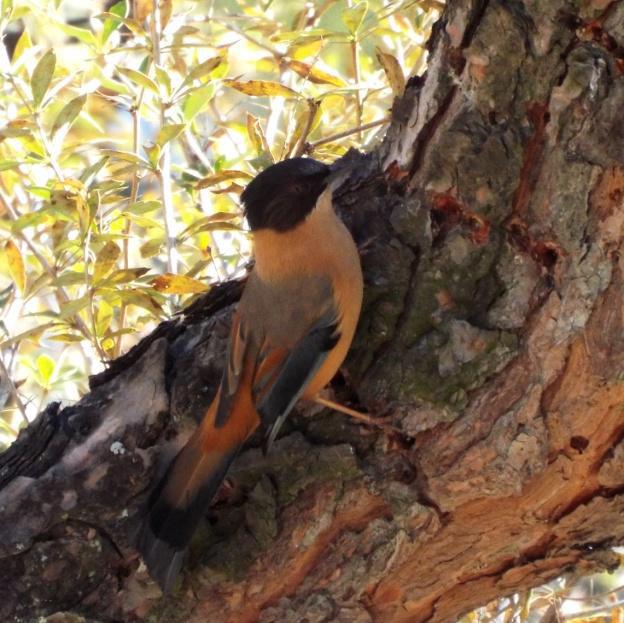Social media video featuring the project.
Impact of Parvati Hydro-electric Project on habitats for montane birds, Western Himalaya
14 Apr 2011 Sainj Valley, India, Indian Sub-continent Birds
Conservation of Critical Habitats for Montane Birds through Community Participation in Sainj Valley, Western Himalaya
The project aims to provide onsite biodiversity monitoring which will help with rapid assessment of the impact of hydro-electric development (habitat disturbance) on the avian species richness, abundance and community structure. We will identify key factors that affect the distribution pattern and community structure of birds in four principle habitats (forest, forest edge, agricultural and disturbed). By studying these habitats, the factors controlling the distribution of birds can be identified and used for conservation in the Himalayan region.

Rufous Sibia.
Environmental Impact Assessment (EIA) is a mandatory component for hydro-electric projects but the development and implementation of EIAs is still in its infancy in India. The quality of ecological research and its ability to understand likely impacts is therefore very low. This means that developments proposed in highly biodiverse areas are often very poorly assessed. The Parvati Hydro-electric Project (PHEP) is one such project that is situated near the Great Himalayan National Park (GHNP), a region known for high diversity of Galliformes including Kalij Pheasant, Koklass Pheasant, Himalayan Monal and two globally-threatened species - Western Tragopan and Cheer Pheasant. The area is also candidate to become a World Heritage Site. I decided to undertake a post-EIA of the Parvati Hydro Power Project to understand the likely impact of its construction on the habitats of montane birds. As some baseline ecological data are already available, it is highly advantageous to carry out such study.
Field research will be conducted in the Sainj Valley during a 12-month study period (2011-2012) that incorporates two consecutive breeding seasons for montane birds. Surveys will be conducted in four different montane habitats across a gradient of anthropogenic disturbance, with control sites established in neighbouring undisturbed areas. Bird-habitat surveys will be conducted at census plots using a point-transect distance sampling method. This method has proven effective in determining patterns of abundance and habitat selection exhibited by birds across fragmented forested landscapes. We will calculate bird species richness and diversity measures using rarefaction analysis using program Estimates v8.00. Density estimates and encounter rates (abundance measures) will be calculated using Program Distance 5.0. relationships between bird community measures, GIS spatial remote sensing data and anthropogenic disturbance will be examined using multivariate ordination analyses and Information Theoretic modelling.
The study will help develop future guidelines for the conservation of Western Himalayan birds and importantly, highlight the strengths and weaknesses of Himalayan environmental policies, their implementation and outcomes.
Social media video featuring the project.
Impact of Parvati Hydro-electric Project on habitats for montane birds, Western Himalaya